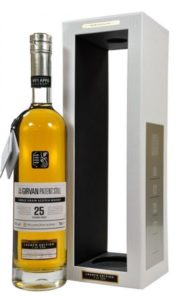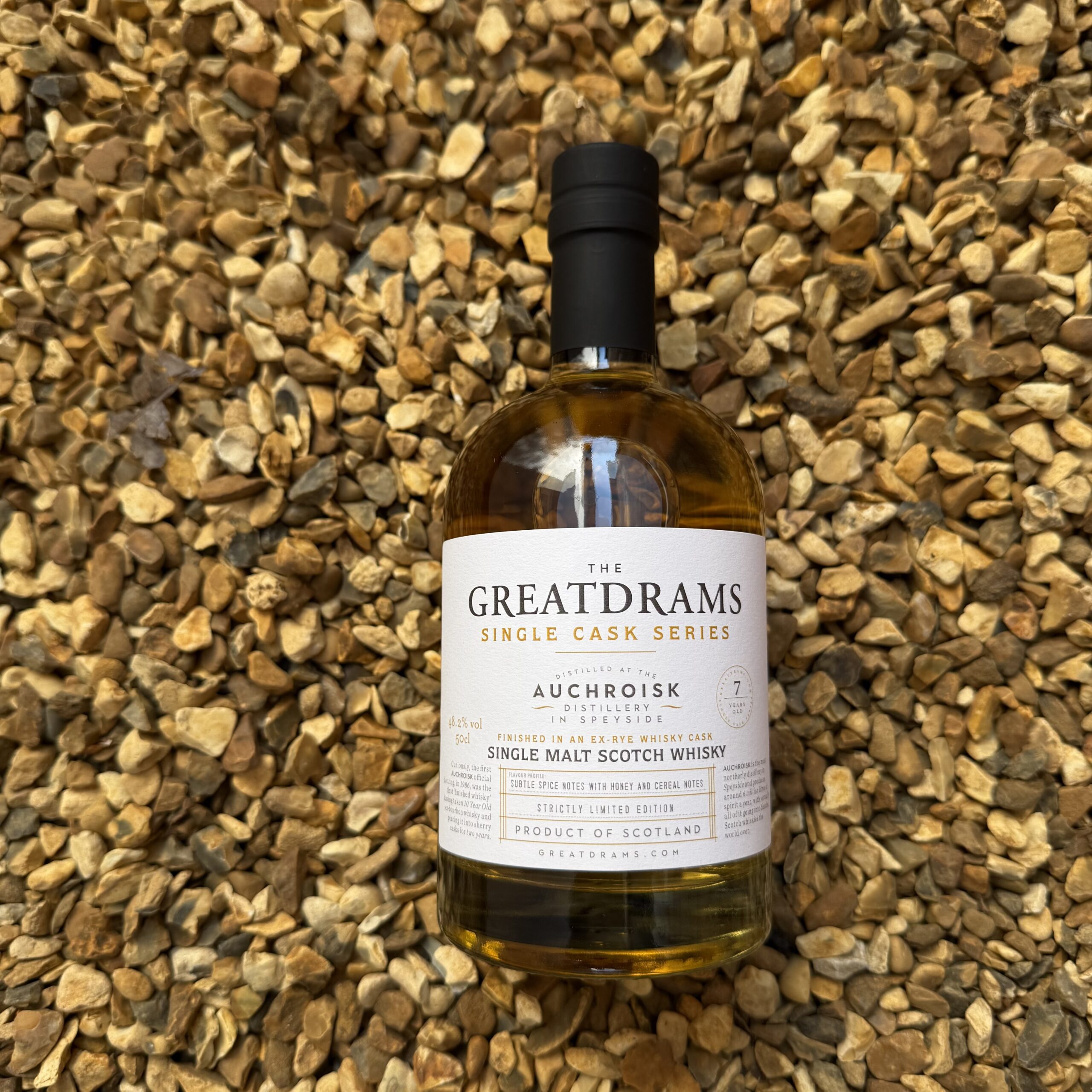Girvan 25 Year Old Single Grain Scotch Whisky: a pack dissection
let’s begin
Just how does a fifty year old mostly quiet distillery go about launching a new category in Scotch? Through creating thoughtful design, iconography and range tiering, that’s how.
These stories are not brought into the pack design at all for the now year-old launch products for its range.
The products themselves, four in total thus far, are borne of a true design to ‘add a new pillar’ to the Scotch market by premiumising single grain releases.
And it is fair to say that they have done a pretty good job.
When you look at the range you see bottle structures reminiscent of wine bottles or even Grey Goose at a push that exude quality, show the liquid and say to the world: “single grain has nothing to hide”.
Bearing in mind there are only a handful of grain distilleries in Scotland, none of whom had at the time managed to premiumise their product on the open market aside from the odd distillery release of independent bottlings, consumers had naturally assumed that grain whisky was blend fodder with little personality to it. The whisky geeks out there believing that it is produced in such a way that eliminates error, drives a consistent liquid and ultimately feels less characterful than traditional single malt releases.
Girvan had to do something really special visually when they went to the open market with their range, and they have.
They broke existing malt category codes.
They created new category codes for single grain.
They designed with modernity in mind.
They have thought about ranging and tiers early on.
They have created shelf standout.
They brought an ambitious positioning to life with clarity.

Consumers will notice that each tier from 4APPS to Proof Strength to Girvan 25 Year Old to 30 Year Old each adds additional premium cues to the secondary pack.
From classic cardboard to rigid cardboard to veneer with magnetic girvan 25 year oldclosures, the tiering is up there with the best of them, especially when lined up side by side.
When speaking with Global Brand Ambassador for Girvan Patent Still, Kevin Abrook recently I asked him about the secondary pack and he was at pains to tell me just how much they thought about the trade up story and how the bottle’s sleek design with lots of liquid on show would have been ruined had they not cut panels out of the rigid secondary pack to increase sightlines.
The use of lots of white space on pack, printed panels on the side of the outer pack and a booklet inside that is so minimalist yet communicative in its design that it really does personify the brand promise of ‘deliciously different’.
Will these become the new normal or even category codes within single grain? Time will tell.
Part of me wants to say it is too modern, too slick, too unexpected for the wide Scotch category, but it works.
It is definitely super premium, no questions there, and once you hold the Girvan 25 Year Old, for example, you feel every penny’s worth as you casually roll your fingers over the rigid outer pack structure or look longingly at the iconography piecing together the story of a product that has taken a quarter of a century to be ready for release and your consumption.
The packaging, for me, is a true personification and testament to the precision engineering used to create the impressive Girvan stills now fifty-two years ago.
What do you think of the Girvan Patent Still packaging? Do you think it disrupts in a good way or does it break too many category codes?
Written by Greg Dillon
Greg is a freelance brand strategist for hire specialising in creating compelling brand positioning / propositions, creative platforms and all things strategic for whisky and other luxury spirits, he also authors multi-award nominated GreatDrams.com, a site for whisky drinkers and learners alike and can be contacted on [email protected] or over at Facebook.com/GreatDrams.












